About ten years ago, Steven Spurrier, a mentor of sorts and a person I always learned from and much admired, had me in stitches in telling me about sparkling wine in Great Britain. According to him, with just one winery making noteworthy sparkling wine in Wales, it was all English sparkling wine to him and nothing else. (Very Steven, but I can only imagine how happy the Welsh must have been.) Furthermore, he was completely aghast at the notion of, and the trend in, calling such sparkling wines “English fizz”. In his own words, eyes firmly bulging out of their sockets and mouth puckered in a disdainful curve “…there is no way in hell I’m ever going to call our fine classic method wines English fizz. Fizzzzz!”. You could hardly blame him: British sparkling wines were already then, and are maybe even more so today, far too good a product to be treated so lightly (slightly?).
Clearly, already back then, we weren’t the only ones who were bullish on British bubblies: in December 2015, the famous Champagne house of Tattinger bought a vineyard in Kent (England) near Faversham to start producing English sparkling wine (and establishing Domaine Evremond in the process). In the meantime, another pusher of Gallic bubbles, Pommery, has also joined the fray, and now grows grapes on roughly 36 hectares in Hampshire. And seeing how World War II went for them, the Germans apparently feel like “if you can’t beat them, might as well join them” and helped themselves to the very fine Bolney Wine Estate in West Sussex, courtesy of bubblies-giant Henkell-Freixenet.
The British have been into sparkling wine since their first appearance on the market centuries ago. It was in fact a London doctor, Christopher Merret, who in 1662 did humanity an enormous service by suggesting/recommending using much thicker glass with which to make bottles meant to hold bubbly wines. Given these are all about atmospheric pressure pumped up to the high heavens which had bottles exploding right and left, Merret, obviously no fool, sought to prevent that from happening. That much remembered, the modern British sparkling wine industry really kicks off again only in the 1970s and 1980s. It did so especially with the turn of the new century, after having initially started as a mostly still wine industry. Undoubtedly, climate change has played a role in Britain’s rise to prominence in the production of high-quality sparkling wines. The combination of an always warmer macroclimate (as in “warm enough”: but believe it or not, Sussex in England actually has less days of frost and warmer winters than Champagne) and of limestone-rich soils not unlike those of Champagne (but though more or less similar, their geologic origins are not the same: see “Of wealds and geology” a little below here), plus passionate and knowledgeable viticulturalists and winemakers have made British world-class bubblies a reality. This realization has been further brought to the fore by a number of British wine estates winning major wine competitions and medals over the last twenty years.
Facts and figures
Based on the data bank of Wines of Great Britain (2022-2023 Industry Report) and helpful winery owners, (to all of which and whom I am indebted), I can write that vineyard planting is alive and well in Great Britain. Going back to my “English fizz” story with which I started this piece, there are 3,855 hectares under vine in England; 70 hectares in Wales; and 1.9 hectares planted in something named as “other”, which I find to be a rather curious way to refer to Scotland (at least, I think they mean Scotland, given that the arrow on the map points to what is certainly Scotland, and not an island such as Ireland). So British fizz, or even better, British wines, it really is (may Steven forgive me). There are, at last count, 209 wineries and 943 vineyards in Great Britain. More interestingly, the roughly total 3,927 hectares planted with vineyards in Great Britain (not all are in production currently) tell us that there has been a 74% increase in land under vine over the last five years (from the 210 hectares of the 1970s to those of today). Those figures look to become even more impressive given that an estimated 400 hectares were going to be planted in 2023. Clearly, these figures do not refer to the production of sparkling wines only, given that Great Britain makes many still wines too; but at roughly 70% of the total wine production (see below), British sparkling wine represents the lion’s share of that number. The regions most associated with wine production are Kent (1,033 hectares) and Sussex, the latter divided into East (473 hectares) and West (570 hectares) Sussex. Put another way, those three areas represent about 26%, 13% and 15% respectively of total British wine grape plantings. Hampshire (380 hectares or 10% of total plantings), Essex (325 hectares or 8% of total plantings) and Surrey (127 hectares, or 3% of total plantings) round out the top five counties per total plantings (top five counting Sussex as one). Over in Wales, if on a much smaller scale than England’s robust numbers, it’s Monmouth and Carmarthenshire counties (at a whopping 22 and 11 hectares respectively) that pull the most weight. And speaking of pulling one’s weight, besides acknowledging that I really need to go on a diet (though admittedly that’s probably besides the scope of this article), sparkling wines represent anywhere from 64-72% of total British wine production while still wines sit in the range of 28-36% (2017-2022 data, Wines of Great Britain). British sparkling wines are mostly white (78%; Rosés represent only 22% of the country’s total bubbly production); the overwhelming majority (93%) are made by the traditional or classic method of secondary fermentation in the bottle (à la Champagne). Tank or Charmat-Martinotti method bottlings account for only 3% of British sparkling wine production (if you hear wild cheering right now, it’s all those Prosecco producers throwing a party). These numbers are in line with British wine production in general: counting still wines too, 62% of the country’s wines are white, 21% are Rosés and only 16% are red. For my mathematically-inclined readers, yes, there’s a 1% missing there: the stats show that the 1% in question is referenced as “other” meaning most likely orange wines (and if that’s not the colour that is meant, then I humbly suggest we refrain from asking about them, never mind even considering to drink them).
The grapes
Most English sparkling wines are made with the classic triad of grapes typical of Champagne: Chardonnay, Pinot Noir and Pinot Meunier. However, some are made with the inclusion of other varieties, such as Seyval Blanc. And while you’d think otherwise, such “out of the box” wines are not the runts of the litter: not at all, in fact. I have had quite a few remarkably satisfying and delicious British sparklers made with small percentages of different grapes than the ones people have grown accustomed to as the “holy trinity” of Champagne. Just like it is with the wines of many of other countries, fads and fashions play a nefarious role here: to be crystal-clear, just because the thing is made with the supposedly “three best” grapes, it doesn’t mean it’s really all that good, and viceversa.
But I digress. For the time being, the most planted wine grape in the land of Albion, at 1,228 hectares (or 31% of total plantings), is Chardonnay. Next up are, not surprisingly given what we know of the makeup of British wine production (as mentioned previously, roughly 68% sparkling wines and 32% still wines), Pinot Noir and Pinot Meunier (1,141 hectares and 343 hectares respectively, or 29% and 9% of total grape varieties planted). In fact, given the high acidity British sparkling wines are famous for, and the country’s less than genteel climate, I’m actually surprised that there isn’t more Pinot Meunier planted there [then again, compared to the (almost) piece of cake that Chardonnay is, the Pinot varieties are notoriously difficult to work with in both vineyard and cellar, so there’s always a logic to the numbers]. Bacchus and Seyval Blanc, two unheralded grapes that don’t get much love by the tail-wagging conformist wine press (what do you really expect), are in fourth and fifth position in the list of the most planted: there are 298 hectares of Bacchus (8%) and 122 hectares of Seyval Blanc (3%) planted in the United Kingdom. Both grapes make lovely still wines and contribute to the making of sparklers that are both different and delicious. (And as an aside, I will just add that it’s extremely interesting to me that in every upscale London restaurant I go I always seem to run across very good, delicious still Kerner wine, yet this variety does not appear in Britain’s top-10 most planted grape varieties: go figure.)
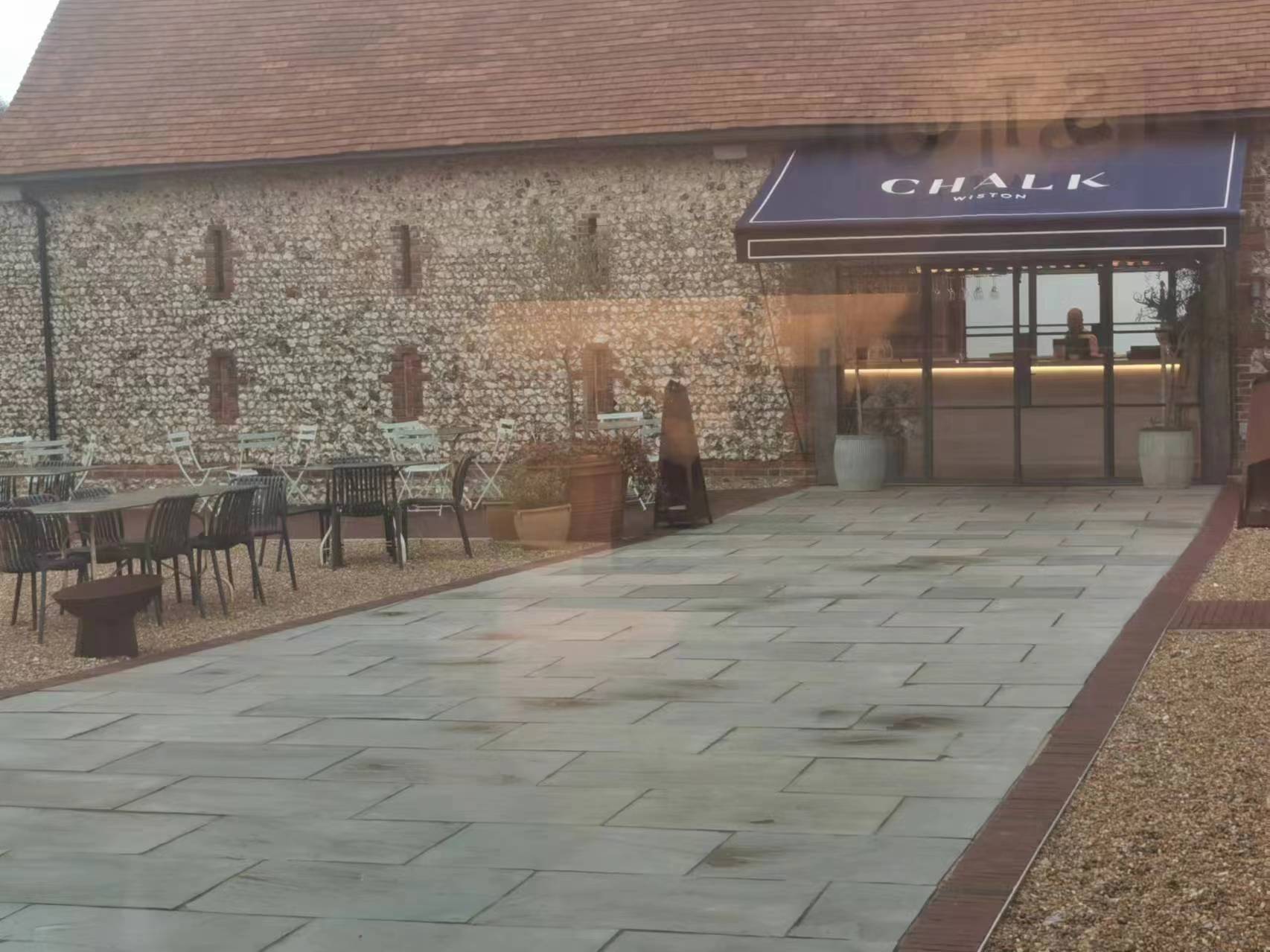
Of wealds and geology
A weald is a heavily wooded area: more specifically, the term refers to a formerly wooded district including parts of Kent, Surrey, and East Sussex. Hedges in the weald indicate land ownership and administrative boundaries; help to manage livestock; provide shelter for farm animals and crops; and were once a source of timber and fuel. Historically, the wealds were the best places to farm (and not just for grapes), especially if south-facing and at relatively low altitude; less exposed and surrounded by woodlands that helped block the winds creating a warmer mesoclimate, they were also areas that were usually relatively well-drained. All that coupled to high nutrient-containing soils made for ideal grape-growing conditions. For example, many in Britain believe that areas that historically gave good crops of high-quality apples and hops will give just as good grapes.
In fact, the role of soil and geology in crafting quality British sparkling wines begs a deeper analysis than an overly-simplistic “… We’ve got the same chalk as the French”. For one thing, they are not one and the same. As an example, consider that Britain’s Newhaven Chalk Formation originated right between the end of the Santonian and the beginning of the Campanian stages of the Late (or Upper) Cretaceous Period of the Mesozoic Era, while the geologic age of Champagne’s soil spans a much larger time, being traced back to the Senonian epoch (that includes both Santonian and Campanian stages, as well as the Coniacian and the Maastrichtian), so it’s not quite all so cut and dried. As chalk is formed by the type of sea creatures that died to make it, the types of sea creatures that are at the core of the chalk’s composition (and such sea creatures all lived at different times) are all-important: it follows that because of different species composing the chalk, not to mention how the exoskeletons of the critters were made to bond together, chalks of not just different compositions but structures too are formed. This means that the large diversity of possible/potential of chalk formations present, among other things, different mineralities and drainage coefficients. So no, the soils and the soils geologies of lands as far removed as those of France and the United Kingdom are not the same, and that inevitably has repercussions on the wines that will be made from each soil (how important or defining is however anybody’s guess).

Furthermore, much of Britain’s vineyards the grapes of which are destined to the production of bubblies aren’t really planted on chalky-limestone soils. Soil-wise, green sandstone is actually a very big player in the United Kingdom, and many in the industry believe it to be a very important causal factor in the genesis of their best wines. Which begs the question: if Champagne is so unique because of its chalk and Britain is so lucky to have it too, then why aren’t more vines planted on the stuff? That question is at the heart and soul of every terroiriste worthy of his microscope and shovel; but, by contrast, when I talked to the folks at Ridgeview and Highweald, the party line was that to make a quality British sparkler “… The object is to have really good, fully healthy fruit that has the right concentration and balance at the right yields; so it’s a much more complex matter than just soil type”. For example, at Ridgeview they believe that the clay in their soil is ideal for making great wines, testing it in as many as fifteen different sites (and in the end, the best of them all was in the plot located right in front of the main house). In fact, both Franciacorta and Tasmania are making pretty good sparkling wines, and neither one of those two can boast much, if any chalk, in their soils. Furthermore, chalk is not the best of all possible worlds in dry years, as its exceptional drainage capacities (but again, it depends on the type of chalk, which as I have mentioned can differ widely from one kind to another) leads to potential water deprivation and stress in droughty years. To compound the chalk-conundrum further, many maintain that in the South Downs area of England (where much of the soil chalk is found), the best vineyard sites all face more or less north, and in Britain, “where you get a tan from standing in the English rain” (that’s not me talking, but Lennon-McCartney), south- and east-facing slopes are still the most desired ones, at least for the time being.
So it really all boils down to a much more complex analysis that one needs to make, rather than limiting oneself to a “chalk or bust” mentality (and we haven’t even begun to consider the myriad factors related to winemaking: for sure, sparkling wine is a very technological proposition, and potential wine-altering interventions are myriad). But if soil is where your wine-heart beats (I know mine does), then just be aware that the soils of southern England are just as complex as those of many other world wine regions. The aforementioned green sandstone (which unlike clay offers very good drainage: if you know anything about English rainfall then you immediately grasp why that would be a desirable trait for beleaguered farmers); the also previously mentioned clay (which provides power and structure, but sloping sites are needed to ensure decent drainage); limestone (all-important in that it provides citrussy acidity and finesse, but also because every single Frenchman worthy of his baguette and wine glass will tell you that in its absence great wines cannot be made); and greensand (that lies below the chalk layer and becomes readily visible when the chalk has weathered or eroded off; it too offers good drainage) are all important parts to the British soil and sparkling wine quality conundrum.
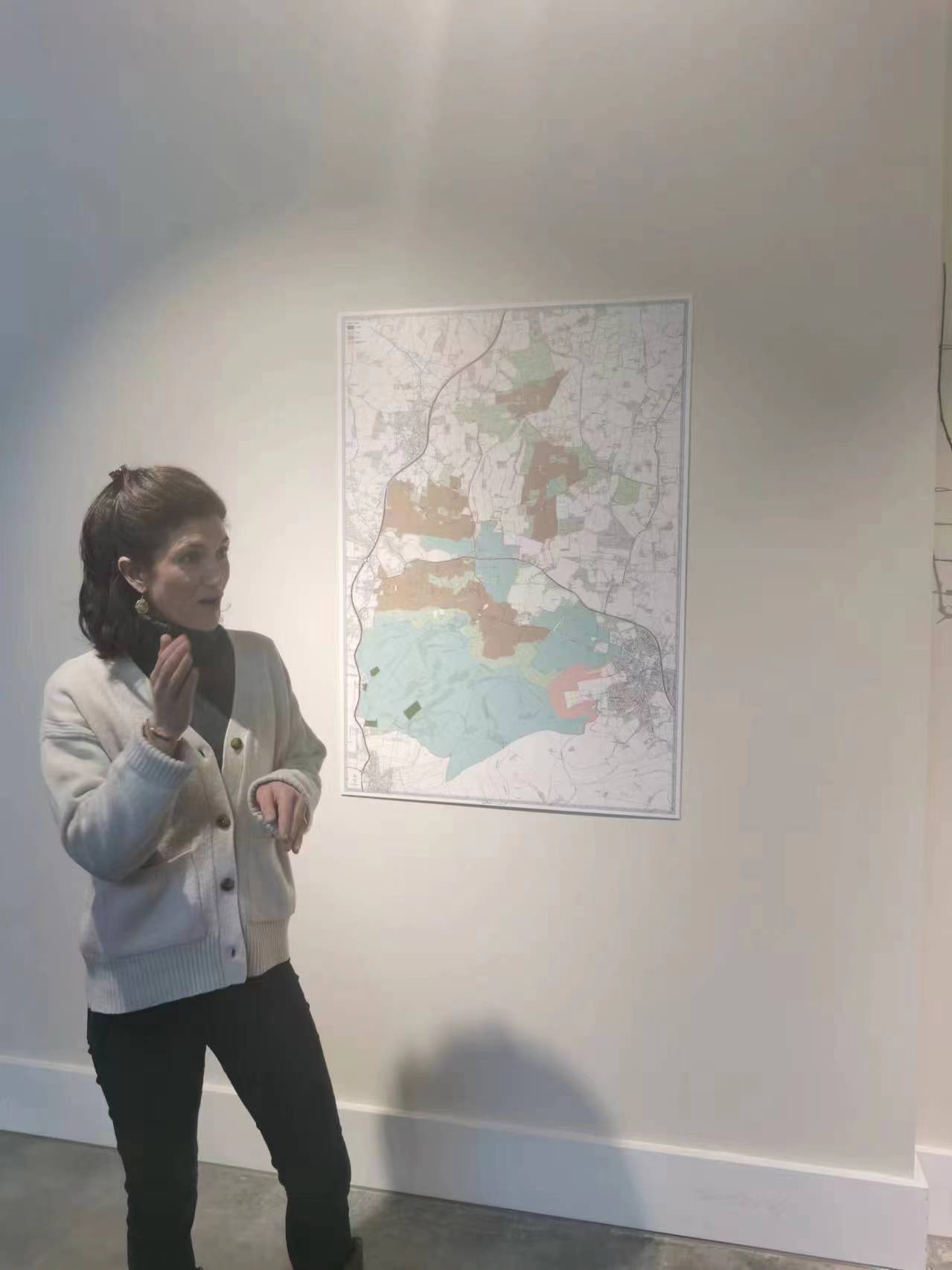
Pros and Cons
If you’re the type that likes high-acid, vertical wines, then British sparkling wines will be your dog’s bau (yes, I know, that really should be the “cat’s meow” instead of the “dog’s bau”, but what can I tell you, I’m a dog person). Good examples of British sparklers have enamel-shattering levels of acidity that is however harmonious and really extends their mouthfeels; the acidity also provides noteworthy clarity and cut to the wines. It is here where I will humbly suggest the soil’s chalk role is not as unimportant as some would like it to be (or seem): while most if not all British sparklers have that high acidity level that will always titillate if not jolt your tastebuds, the perception of that acidity is different in wines born off chalk-containing soils. Much like the acidity you perceive in wines born off granite soils is completely different than that of wines made with grapes planted on limestone soils, it is the same with British sparklers born from clay and from chalk. The mouthfeels are different: not better or worse, but different. Factor in that (harmonious) acidity helps make the wines very food-friendly, cleansing the palate like few others and getting you ready to enjoy mouthful after mouthful, so what’s there not to like? Last but not least, British bubblies boast remarkable purity: rusticity, if and when present, is mostly the result of human flaws and a less than ideal winemaking process leading to coarse, big bubbles.
But for every red rose there is also a white one (the Brits know this well): if British sparkling wines are so enjoyable because of their liveliness, purity and vibrancy, at the same time they also, almost always, leave me longing for greater levels of complexity. By and large, as good as British bubblies are, they just aren’t as complex or as deep as the best from France (in fairness, this is also true of most other New World bubblies, and of Cava, Sekt, Franciacorta and Trentodoc wines as well). Cost per bottle is something else to think about. Unfortunately, when it comes to English sparkling wines, lower production volumes and generally high production costs mean that compared to say many Champagne bottlings you really don’t get much of a bargain when choosing them; it’s actually easier to find many a not-very-well-known Champagne bottling for a much lower price than many good English sparklers. Which creates the less than desirable situation of people having to choose between bubblies of two different countries sold at more or less the same price level, but with very different levels of brand recognition and prestige attached. Which in the end means people almost inevitably pick the Champagne, believing (but not admitting) that their bragging rights, prestige, manliness and/or womanliness will be taken much farther at any party or dinner they may bring that bottle to. The irony in all of that is that, more often than not, it is the English sparkler that will usually be better of the two wines (when it comes to inexpensive and usually disappointing Champagne, Franciacorta more than holds its own too, and then some).
Last but not least, and after all that bottle price-talk, many winery personnel told me during my visits at the estates that there is a growing concern among producers that British sparkling wines are not holding their price-lines. More than one winemaker mentioned how many even famous names among British sparkling wine producers are increasingly discounting their wines or selling them at lower than usual prices in order to move them. Hopefully this is just a temporary trend related more to the difficult world economic climate we currently live in, than anything more specific. British sparkling wine is much too good to suffer the ignominy of too low prices per bottle; in fact, it is my not so humble view that neither it, nor its very fine producers, deserve that sorry fate.
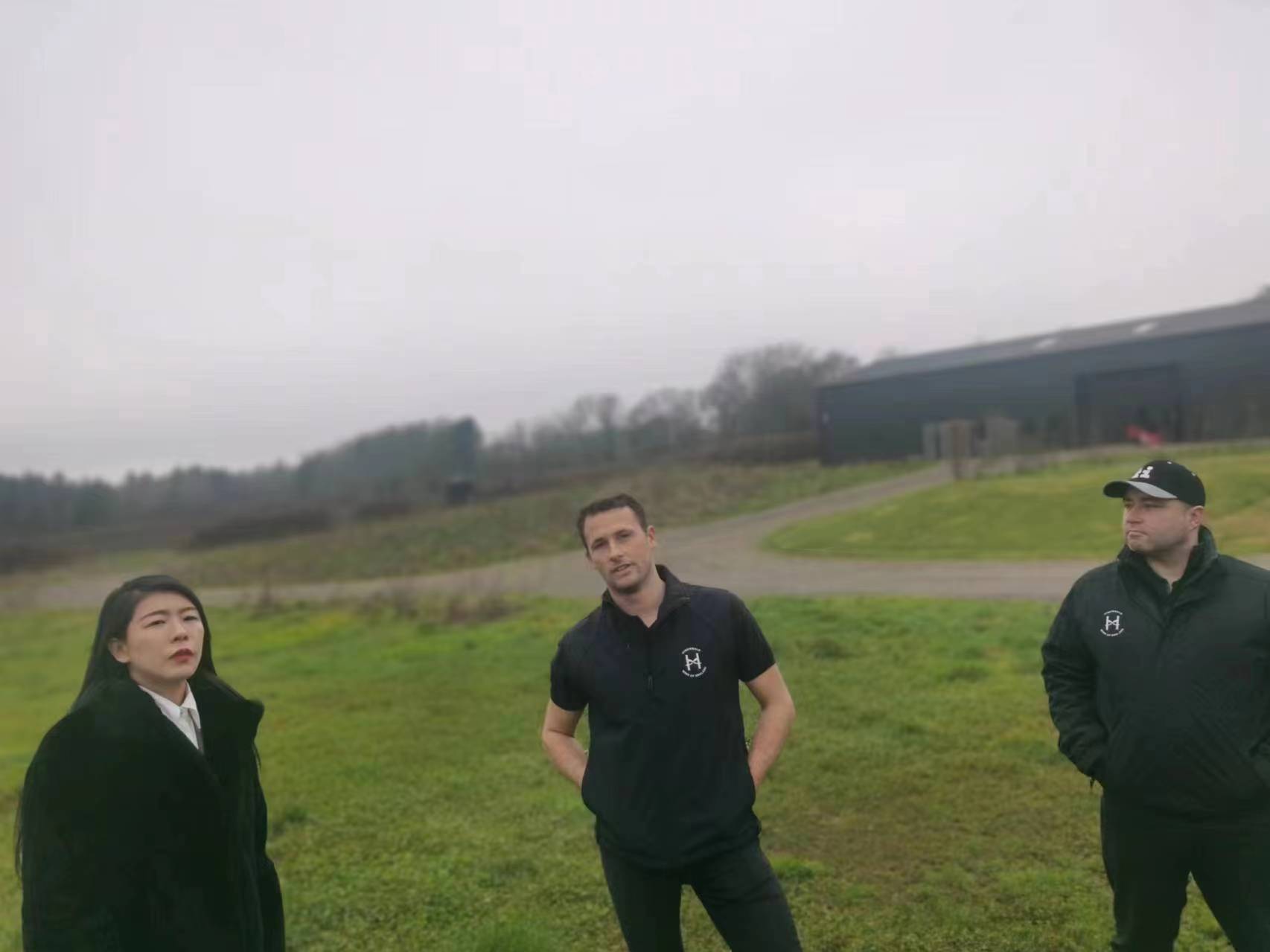
The wines in this tasting report
All the wines in this report were tasted directly in London (Great Britain’s London) in February 2024, either during winery visits or in my hotel room where I also tasted a plethora of wines. As it always is, the airfare, hotel and transport costs were footed directly by myself or the friends I visited the wineries with. This article was not paid for in any way, shape, or form by producer associations, wineries or other wine institutions. A few of the wines in this report were sourced from restaurants and tasted right there and then; an even smaller number of wines were tasted in my office in Shanghai, where I live and work, courtesy of importers or because I bought them from wine shops.
Balfour Winery (Hush Heath Estate).
Balfour Winery NV Classic Cuvée Balfour 1503 English Sparkling Wine 91
Bright straw yellow. Delicate orchard fruit (white peach, yellow apple) aromas are complicated by toasty notes. Then nicely silky flavours of candied jasmine and peach, with refreshing acid lift extending the flavours on the long back end. About 10% Pinot Meunier here to help give that bit of extra roundness (to which a full malo also contributes). Easygoing, likeable Brut that will match well to simple fare, from clams to fish and chips. The “1503” in the wine’s name is a reference to the date the winery’s historic manor was built, the home of the Balfour-Lynn family that owns the estate. Drinking window: 2024-2027.
Balfour Winery 2018 Winemaker’s Collection Balfour Saignée Rosé English Sparkling Wine 88
This is the estate’s flagship bottling that has made it famous, but I found this 2018 to be quite herbal. Medium pink colour. Herb aromas galore (wild fennel and mint first and foremost) slowly give way to sour red cherry and redcurrant on the nose, but the vegetal note remains throughout. Crisp acidity provides noteworthy cut to the red fruit flavours, but a green undertone persists on the long finish. Those who like a herbal note to their wines will like this more than I. Perhaps cellaring another year or two will help. This is a blend of Chardonnay and three Pinots: Noir, Meunier and Blanc. The “saignée” in the wine’s name refers to how this pink bubbly was made, by extracting colour from a period of skin contact with the must. Drinking window: 2026-2029.
Bolney Wine Estate.
Bolney Wine Estate Classic Cuvée 90
Bright straw. Brioche, apples and apricots on the nose and in the mouth. Fresh and zingy on the long finish. An elegant, approachable English sparkler that blends Pinot Noir and Chardonnay (according to the Bolney website, but I’ve seen other websites cite also Pinot Meunier; and at 25%, not a small amount of it, let me add, so go figure), cool-fermented and aged two years on the lees. Drinking window: 2024-2027.
Bolney Wine Estate 2020 Blanc de Blancs 91
Golden-tinged straw colour. Aromas and flavours of orange blossom, puff pastry and lemon ice nuances. At once textured and very lifted. This rather stylish 100% Chardonnay showcases very good complexity and balance. Closes long with noteworthy finesse. Spent 18 months on the lees. Drinking window: 2025-2030.
Bolney Wine Estate 2018 Cuvée Rosé 90
Salmon-pink colour. Floral and red apple aromas are complemented by almond paste nuances. Then similar flavours to the aromas, with plenty of fresh zip on the long creamy-tactile finish. Drinking window: 2024-2029.
Camel Valley.
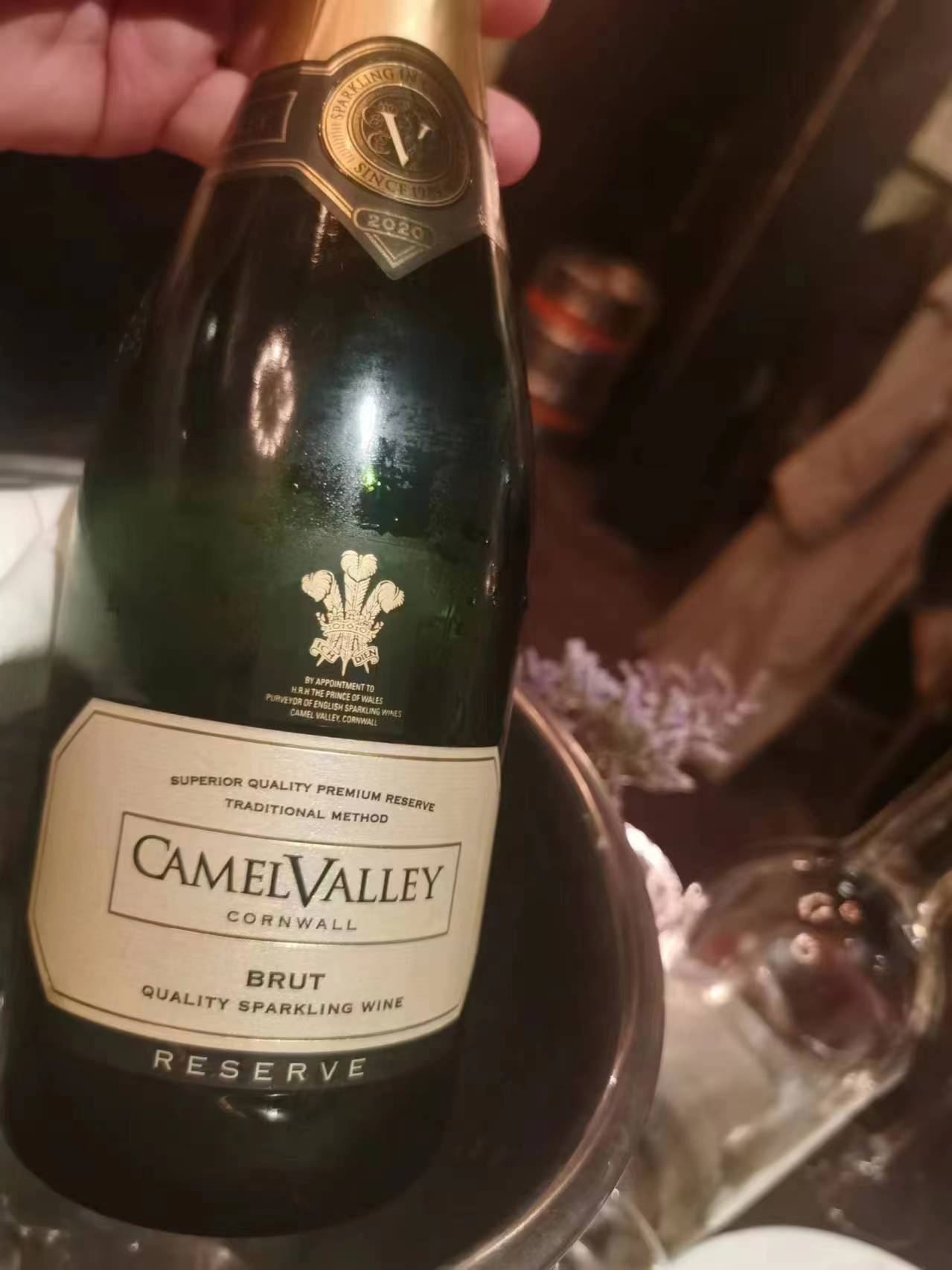
Camel Valley 2020 Brut Reserve Cornwall English Sparkling Wine 92
Bright straw. Elderberries, lemon blossom, greengage and honey on the pure nose. Then at once creamy and bright, with very good lift to the orchard fruit flavours that linger impressively on the nicely frothy close. Sneaky concentration and complexity here. From Cornwall, a delicious sparkling wine made with a blend of Seyval Blanc, Chardonnay and Pinot Noir. A very good example of how Seyval Blanc, a very underrated grape variety, can contribute to the making of fine wines, both still and sparkling. Drinking window:
Chapel Down.
One of England’s leading wine producers, Chapel Down produces wines of outstanding quality in a wide range. Chapel Down is based in Tenterden, Kent, but owns vineyards across the main growing regions of southern England.

Chapel Down NV Brut English Sparkling Wine 91
A perhaps underrated English sparkling wine, this is brimming with aromas and flavours of red apples, freshly toasted bread, strawberries and a hint of lemongrass. A note of quince paste emerges on the long back end. Very adaptable bubbly, that will do well as an aperitif but can match even with white meat dishes. A blend of Chardonnay, Pinot Noir, Pinot Meunier and Pinot Blanc. Drinking window: 2024-2026.
Digby.
Digby Fine English NV Brut English Sparkling Wine 90
Very good straw yellow. Aromas of lemon, hazelnut, and thyme and fresh hazelnut, complemented by a hint of smoke. Then bright and expressive in the mouth, with lively acidity slicing nicely framing toasty nuances. Long and very pure on the classic finish. A blend of about 40% Pinot Noir, 35% Chardonnay and 25% Pinot Meunier grown in West Sussex, it clocks in at 8 g/L dosage and a lip-searing but welcome 9.5 g/L total acidity. Another very good bubbly from Digby. Drinking window: 2024-2028.
Digby Fine English NV Brut Leander Club Leander Pink English Sparkling Wine 89
Bright good full pink colour. Redcurrant and raspberry aromas and flavours are complicated by herbs and spices such as anise and cardamom. The close is tactile yet creamy, and has very good peppery zing. A blend of roughly 50% Pinot Noir, 35% Chardonnay and 15% Pinot Meunier grown mostly in Dorset and Kent, with smaller sources coming from Sussex and Hampshire, planted on mostly clay and chalk, with some greensand. The first fermentation takes place in 94% stainless steel tanks and 6% oak; and that spent at least 24 months This boasts 12 g/L dosage and 9.5 g/L total acidity. This is the official pink sparkling wine of Leander Club in HOT (Henley-on-Thames), apparently the most decorated rowing club in the world (founded in 1818, the club reportedly has won more Olympic medals than any other sports club anywhere). Sales proceeds help ensure young athletes receive proper training. Drinking window: 2024-2028.
Greyfriars Vineyard.
Greyfriars Vineyard 2015 Brut Blanc de Blancs 89
Luminous golden-tinged straw hue. Yeasty nuances complicate lemon curd, almond paste and white flowers on the nose and in the mouth. Above average complexity here but also above average size and palate presence. Finishes long and clean, with still zingy freshness for a nine years-old Blanc de Blancs. From the North Downs, this spent five, almost six years on the lees and showcases a definite tropical personality that’s not so common in English sparklers. Drinking window: 2024-2028.
Gusbourne.
Over the years, the best British sparkling wines I have had have almost always been, with only a few exceptions, those from this estate. What’s most impressive about Gusbourne is the overall quality level is extremely high even in the wines in the entry-level range. And their Blanc de Blancs is a truly world class bubbly. At the winery they champion a low-intervention, sustainable approach and that too probably helps in crafting wines of extreme purity and precision.
Gusbourne 2019 Brut Reserve English Sparkling Wine 90
Golden-tinged straw colour. Apple, pear and apricots dominate on the fruity, easygoing nose. Puff pastry and sweet spices stick out on the rounded, well-balanced mouthfeel (9.3 g/L total acidity and 9 g/L r.s.). This nicely approachable sparkler persists nicely on the close. This blend of 62% Chardonnay, 28% Pinot Noir, and 10% Pinot Meunier grown in Kent (clay-sandy soils) and West Sussex (chalk and flinty-loam soils) fermented in temperature controlled stainless steel tanks with a small percentage fermented in old oak barrels for added complexity. Drinking window: 2024-2028.
Gusbourne 2018 Blanc de Blancs Traditional Method English Sparkling Wine 94
Rather pale straw colour. Minty herbs and peach on the nose and in the mouth, where complicating flavours of hawthorne, shortbread cookies and grapefruit curd add complexity. Long and finely-etched on the long, gothic steeple-like finish but with plenty of 2018 sun- and warmth-drenched tones. A 100% Chardonnay wine fermented in temperature controlled stainless steel tanks with a small percentage fermented in old oak barrels for added complexity, this has a high-acid but well-balanced mouthfeel (9.8 g/L total acidity and a pH 3.5, and 11.6 g/L r.s.). Spent a minimum of 33 months on the lees. Drinking window: 2024-2028.
Gusbourne 2016 Blanc de Blancs Traditional Method English Sparkling Wine 93
Wonderfully elegant, this boasts delicate aromas of lemon blossom, pink grapefruit and green apple, with a richer undertone of grilled nuts, apricots and cream. In the mouth, where a vivid, spicy note of ginger and penetrating acidity broaden and extend the flavours that hint more about nuts and herbs than citrus fruit, but still stays lemony and gingery on the long close. Not at all angular thanks to 7.9 g/L acidity (and 3.01 pH) and 8.3 g/L residual sugar, this is really quite the sparkler that will match heavenly with lobster and similar crustaceans. This 100% Chardonnay wine spent 42 months on the lees. Drinking window: 2024-2027.
Gusbourne 2018 Brut Rosé English Sparkling Wine 93
Pretty salmon pink colour with a steady stream of fine bubbles. Raspberry and strawberry are lifted by hints of rose and peony. Then fresh and juicy (clocks in at 8.8 g/L total acidity in 2018), with very good mellow sweetness to the red berry and cherry flavours (and 10 g/L residual sugar). Finishes long and bright, with lovely balance. A blend of 59% Chardonnay, 23% Pinot Noir, and 18% Pinot Meunier grown in Kent (clay-sandy soils) and West Sussex (chalk and flinty-loam soils), about 50% of the fruit was dropped to the ground in August to help make a richer, more concentrated bubbly (the warm and sunny July-September period helped too). This Rosé sees primary fermentation in stainless steel tanks with a small percentage of red wine blended in prior to secondary fermentation taking place. A real crowd-pleaser, this is world-class pink bubbly. Drinking window: 2024-2028.
Hambledon.
Established in 1952 by Major General Sir Guy Salisbury, Hambledon (the name of the village) is England’s oldest commercial winery (but that’s not the village’s only claim to fame: it is apparently also the cradle of cricket). While the winery started out focusing on still wines, this changed when Ian Kellet, a former investment banker, bought the property in 1999, turning the focus to sparkling wine production. He initially planted about four hectares of Chardonnay, Pinot Noir, and Pinot Meunier in twenty-seven different clone and rootstock combinations; importantly, he did so on very chalk-rich soils. (You might go as far as saying that the change of course to making sparklers was most likely the winery’s unavoidable destiny, given that the founder, Salisbury, was a former diplomat in Paris who had friends at the Pol Roger firm of Champagne.) Kellet increased plantings to over eighty hectares and made Hambledon one of the finest sources of quality British sparkling wines, but in September 2023, Berry Bros. & Rudd and Atlantis Wine Holdings (a member of the Symington Group) acquired the estate as a fifty-fifty business venture.
Hambledon NV Brut Classic Cuvée English Sparkling Wine 90
Yeast, pear and flowers on the broad, showy nose. Enters with notes of kiwi and other green fruits, then veers to hints of grilled nuts and red berries. Finishes broad and with nice persistence. A blend of 52% Chardonnay, 32% Pinot Noir, and 16% Pinot Meunier (not 17%, as has been written elsewhere) from the 2018 harvest, grown on southeast-facing chalky slopes of Windmill Down, in the historic village of Hambledon. About 3% tank-aged reserve wine was added for further complexity, this spent at least 35 months on the lees. Drinking window: 2024-2026.
Hambledon NV Brut Classic Cuvée Rosé English Sparkling Wine 89
Pale orange-pink. Aromas and flavours of strawberry and Morello cherries have a distinctly savoury, umami-like quality. Closes medium-long and uncomplicated, with rising nuances of red apples. This Chardonnay-led blend (86%) has 14% Pinot Noir too, but no Pinot Meunier (the release I tried was mostly from the 2018 harvest), with a small percentage of tank-aged reserve wine added for further complexity. This spent at least 45 months on the lees. Drinking window: 2024-2025.
Hattingley Valley.
Out of Hampshire, Hattingley Valley winery has a long and distinguished history of making very fine British sparkling wines out of an eco-friendly winery. It all started as a farm diversification project in 2008, which is also the year the first vineyard was planted. However, Hattingley has always relied on buying fruit from high-quality growers (entering into long-term arrangements, a minimum of ten years long, for example) in a range of English regions rather than rely on its own estate-grown grapes. This is a means by which to create the most complex wines possible and especially hedge one’s bets against the vagaries of English weather, such as unforeseen frost episodes.
Hattingley Valley NV Classic Reserve Brut 90
Vivid straw yellow with a good frothy mousse. Sneaky complexity here to the aromas and flavours of preserved lemons, orange blossom, buttered toast and minerals. Finishes long and nicely focused, with repeating notes of warm bread. This complex blend of 47% Chardonnay, 32% Pinot Noir, 19% Pinot Meunier, 2% Pinot Précoce spent up to four years on the lees. Drinking window: 2024-2025.
Hattingley Valley 2020 Classic Rosé Brut 89
Nice pink-orangy colour. Red berries, spicy white pepper and ornage peel on the nose and in the mouth. Bright and energetic if not too complex on the long linear, zippy finish. This blend of 66% Pinot Noir, 33% Pinot Meunier, and 1% Pinot Précoce spent 24 months on the lees. An early harvest of a small crop, this will pair well with charcuterie of all kinds. Drinking window: 2024-2026.
Highweald.
Vineyard plantings began in 2016 in the pretty Sussex High Weald (hence the winery’s name) and today the winery has 43 hectares planted to various varieties including Chardonnay, Pinot Noir, Pinot Meunier, Pinot Gris and Bacchus (Highweald makes some truly lovely still wines too). The winery can count on excellent fruit from its Lakestreet vineyard, boasting a range of different soils: clay loam and silty-sandy clay is where the Chardonnay is planted; greensand over clays and sandstones is the home of the Pinot Noir and Pinot Meunier. Some Pinot Gris is also grown there, mostly on the steepest slopes. The quality of both sparkling wines and still wines can be truly head-turning, so this is one winery worth watching closely in the years to come.

Highweald NV Brut Reserve English Sparkling Wine 92
Pale straw yellow. Fresh apple, elderflower and citrus fruits plus a smattering of white flowers on the pretty nose. Enters creamy and suave, with a hint of residual sugar (about 6.5g/L) for added roundness with the apple and floral flavours lasting nicely on the clean crisp soft finish. A blend of 65% Chardonnay, 20%Pinot Noir, and the rest is Pinot Meunier and Pinot Gris. Plenty to like here. Drinking window: 2024-2026.
Highweald NV Brut Rosé English Sparkling Wine 93
Very pretty pale pink. Peach gelatin, vanilla, and white flowers jump from the glass. Then suave and saline, with precise flavours of red berries and tangerine lingering nicely on the tactile mouthfeel. The aftertaste is clean and youthfully chewy. A blend of Chardonnay (55%), and the rest is Pinot Meunier and Pinot Noir. The dosage is 7-7.5 g/L. Drinking window: 2024-2027.
Highweald NV Ghyll Valley White England 93
A blend of mostly Bacchus (75%), with the rest being Chardonnay and Pinot Gris, partly fermented in barrel and stainless steel: this bottling, released in 2022, was the first release ever and the technical team was still in its experimenting stages with it to see what they could achieve. This is gorgeous and will match very well with Indian food and dishes of other Asian-derived ethnicities (as long as they are not too spicy). Drinking window: 2024-2026.
Highweald 2022 Chardonnay Lake Street Vineyard England 91
Pale straw colour. Hints of green papaya, green apple and banana on the fresh nose. Offers delicately ripe orchard fruit on entry, but the long close is uncompromisingly acid, with a laser beam of acidity essentially cleaning the enamel off your teeth. Underwent full malolactic transformation (I’d be almost scared to think what this would like without the malo being carried out), fermented and aged in barriques for twelve months, so in the end this ends up coming across as relatively harmonious. I’d cellar this for another year at least before pulling the cork. Drinking window: 2025-2028.
Nyetimber.
Nyetimber Classic Cuvée English Sparkling Wine 88
Light straw yellow with a slow bead of medium-sized bubbles. Fresh orange and apples aromas are complicated by musky floral and herb qualities. Gently round, chew and broad in the mouth, offering baked apple, honey and soft citrus flavours complemented by hints of hazelnuts and greengage. The finish showcases good grip and persistence, with inviting nuances of poached pear qualities. Rather well-balanced (8.5-10 g/L total acidity and 8.5 g/L r.s.), this is one bubbly that can pair well with richer, bigger dishes. I’m a big fan of Nyetimber and its wines, but I was slightly disappointed by this bottling, finding it neither as delicate nor as complex as I expect from this famous winery. The stated blend is 55-65% Chardonnay, 30-40% Pinot Noir and 5-15% Pinot Meunier. Nyetimber is blessed with some of the oldest Chardonnay vines in England, first planted in 1988. Drinking window: 2024-2025.
Nyetimber NV Rosé English Sparkling Wine 91
Solid full bright pink colour. Fresh red berries plus hints of anise, lavender and plum compote on the enticing nose. Good sugar/acid balance (9 g/L r.s. and 7.7 g/L total acidity). The stated blend is 45-75% Chardonnay, 25-55% Pinot Noir and less than 5% Pinot Meunier (but I have seen this multi-vintage bubbly described as a 58% Pinot Noir and 42% Chardonnay and spanning four vintages). The grapes are sourced from Nyetimber’s estate vineyards in West Sussex and Hampshire. I’ve always thought Nyetimber makes some of the country’s best Rosé bubblies and this bottling certainly doesn’t do anything to make me think otherwise. Nicely done here, try it with veal carpaccio and tartares (meat but richer, oilier fish will do well too, such as tuna and salmon). Drinking window: 2024-2026.
Rathfinny.
Rathfinny was founded in 2010 by Mark and Sarah Driver, who left careers in the City (Mark Driver was a stockbroker and then a hedge fund manager; Sarah was a property solicitor, with a background in law and teaching at universities and colleges) to move to Sussex with a dream of creating an environmentally-friendly, self-sufficient winery (implementing such things as photovoltaic cells for power, recycling wastewater and using local materials as building blocks). In so doing, they created one of Great Britain’s largest vineyards (about 250 hectares, of which over 90 hectares are under vine) that has gained B Corp Certification, the world’s first grower-producer of sparkling wines to achieve this. Over time, the Drivers haven’t been scared to experiment (they tried Pinot Blanc, Riesling and Auxerrois, for example) before settling on mostly different clones of Champagne’s wholy trinity. Today the winery is considered to be one of the leaders in UK’s quality sparkling wine producers; and I might be totally lost in the woods here, but I have the string suspicion that Rosé is this winery’s strongest suit (and anything generally involving the two darkest-berried Pinots).
Rathfinny 2019 Classic Cuvée 89
Pale straw colour with a fine bead. Easygoing, accessible aromas and flavours of yellow apple and apricot, with a nicely rounded (7 g/L total acidity and 4.5 g/L r.s.) if acid-driven mouthfeel that hints at Key lime pie and lemon madeleines. The finish is medium-long and clean. This is a blend of 44% Pinot Noir, 41% Chardonnay, and 15% Pinot Meunier that spent 36 months on the lees. The 2019 was a complicated vintage, quite hot in the summer but with a wet end of September and October. Drinking window: 2024-2025
Rathfinny 2018 Classic Cuvée 91
Golden-accented pale yellow. Apricot, yellow apple, preserved lemons and quince on the nose and in the mouth. As is typical of Rathfinny, this is marked by a low dosage (about 5 g/L r.s) but though it is not especially high in total acidity (6.6 g/L) it tastes remarkably well-balanced and long. The flavours bring the aromas to mind on the long well-delineated finish. Only the third vintage of this sparkler made, this is a blend of 50% Pinot Noir, 35% Chardonnay, and 15% Pinot Meunier that spent 30 months on the lees. Differently from the 2019, which was a complicated vintage, 2018 will go down as a really great British wine vintage, featuring a very warm summer and ideal picking conditions during the sunny, warm autumn. Drinking window: 2024-2026.
Rathfinny 2019 Classic Cuvée Rosé 90
Bright onion-peel medium pink hue. Peach, baked strawberry pie and herbs on the ample but nicely-delineated, deep nose; this is a good deal more complex than the Classic Cuvée. Red apples and peppery spices follow-though on the red cherry-dominated palate. Closes long and with good sugar/acid balance (5 g/L and 7 g/L, respectively) and with enticing hints of glazed kumquats. This blend of 60% Pinot Noir, 22% Chardonnay, and 18% Pinot Meunier spent 36 months on the lees. Drinking window: 2024-2025.
Rathfinny 2018 Classic Cuvée Rosé 92
Pale pink with a faint orange tinge. Creamy red berries and flowers on the nose, with hints of talc, violets and minerals. Juicy-sweet red berry and ripe citrus flavours pick up weight with aeration, and are complicated by hints of yellow melon and tangerine. Sneaky rich and precise, with very good finishing energy and an echo of candied violets. I quite liked this. Drinking window: 2024-2026.
Rathfinny 2019 Blanc de Noir 91
Pale golden-pink colour. Cranberries and raspberries on the nose give way to similar flavours on the palate, complemented by smoke and hints of orange oil. This 81% Pinot Noir and 19% Pinot meunier is rich- and round and boasts noteworthy power for the year; I think that upping the Pinot Meunier, at least in this vintage, actually helped quite a bit. The usual low dosage (3.5 g/L) is compounded by a really low pH (2.98; total acidity 6.8 g/L) leaving you with a “take no prisoners” impression of almost shrill but also very refined austerity. Well done, given the vintage. Drinking window: 2024-2027.
Rathfinny 2018 Blanc de Noir 92
Golden nuances to the luminous pink colour. Complex aromas and flavours of almond flowers, tangerines, red berries and hersb. At only 3.5 g/L r.s and 6.2 g/L total acidity this tastes quite dry (but not drying), leaving the mouth feeling fresh and clean on the long, mineral-accented finish. I actually would have liked a little more sugar so as to make this taste less austere, but it’s hard to argue with this wine’s quality. This blend of 85% Pinot Noir and 15% Pinot Meunier spent 46 months on the lees and strikes me as being a drop-dead gorgeous British sparkler. Drinking window: 2024-2028.
Ridgeview.
Founded in 1995 by Mike and Chris Rogers (Mike passed away in 2014 and daughter Tamara took over) below the South Downs Ridge in East Sussex, Ridgeview is a certified B Corp estate that has always believed in eco-sustainable, eco-friendly farming practices. It is one of Britain’s wineries with the longest track-record of fine wine production, one that has won a ton of awards and accolades over the years. That much admitted, recent bottlings haven’t struck me as being quite at the same very high-quality level of some of their earlier bottlings, but it’s still hard to be disappointed by any bubbly from this winery.
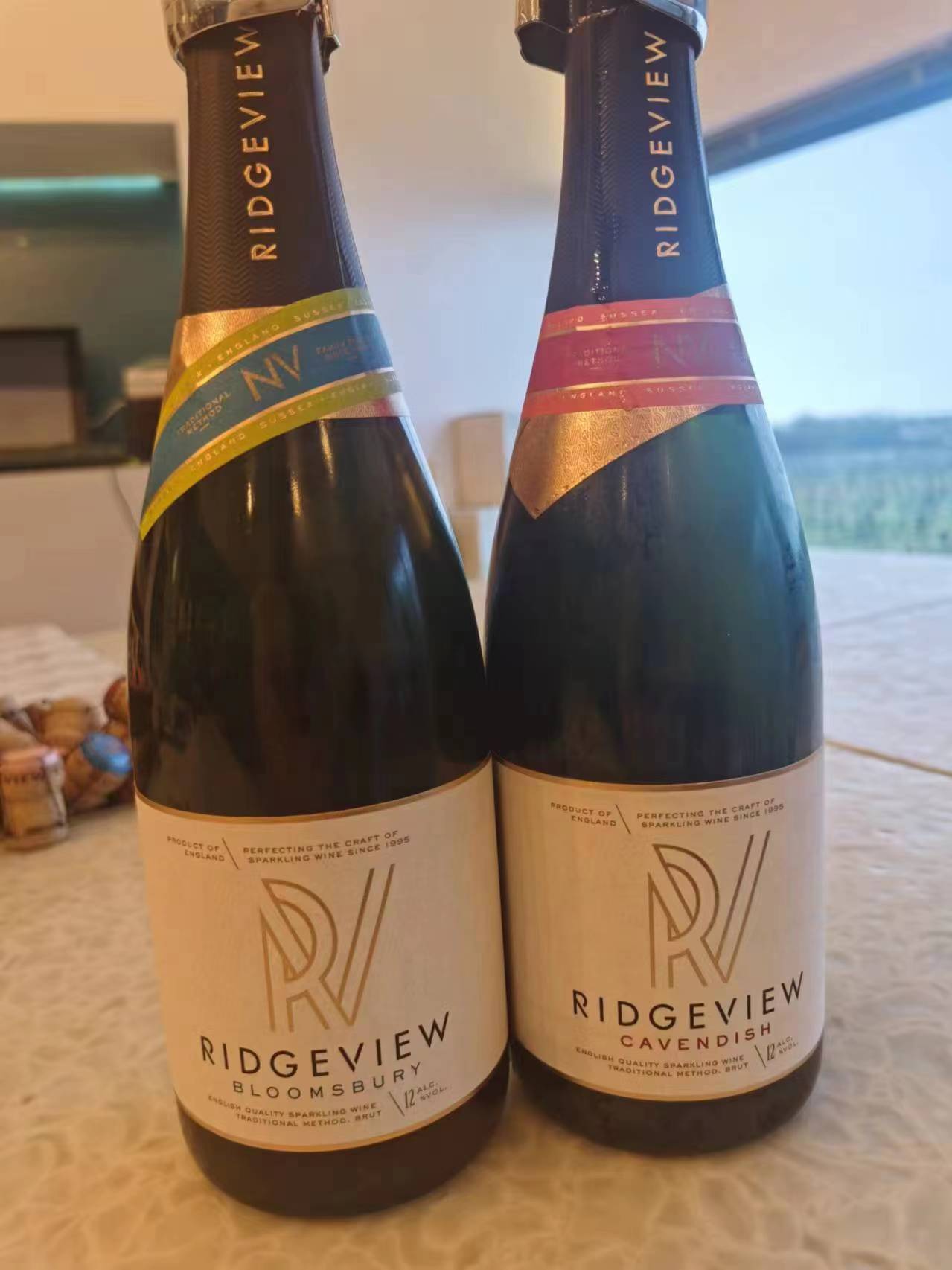
Ridgeview NV English Sparkling Wine Bloomsbury 90
Very pale straw colour. High acid lemon and nectarine and white flowers on the nose and in the mouth. Appley and fresh, this finishes very juicy and fruity with a honeyed note. A blend of 60% Chardonnay and 40% Pinot Noir + Pinot Meunier that spent 12 months on the lees., it’s great intro to the Ridgeview range of wines. Disgorged 10/2023. Drinking window: 2024-2025.
Ridgeview NV English Sparkling Wine Cavendish 91
Bright medium straw. Aromas and flavours of red apple and strawberry on this top-heavy Pinots bubbly. Enters bright and fresh, then a little more monolithic in the middle to rise prettily on the back end. Very much like a good Champagne, there is an obvious leesiness on the long finish. A blend of roughly one third each Chardonnay, Pinot Noir and Pinot Meunier that spent 18 months on the leesthis is really quite good. Disgorged 05/2023. Drinking window: 2024-2026.
Ridgeview 2018 Blanc de Blancs Single Vineyard English Sparkling Wine 91+
Ver pale straw green with a steady stream of small bubbles. Apples and pears with a dusting of citrus peel and jasmine. Fresh juicy and long, very focused if currently still very simple: this needs time in a good cellar to develop further complexity. This is a much-awarded sparkling wine from England and is the only one that is fully estate-grown, estate-bottled wine made at Ridgeview. Spent four years on the lees. Disgorged 08/2023. Drinking window: 2025-2030.
Ridgeview 2015 Blanc de Noirs Limited Release English Sparkling Wine 93
Pale medium pink. Rich, sweet aromas of red apple and berries, with hints of orange marmalade and herbs. Then fresh and juicy in the mouth, with intense red apple and plum flavours, with very good texture and a tactile mouthfeel that lasts and lasts. A blend that is 50% Pinot Meunier and 50% Pinot Noir. Very promising Blanc de Noirs. Disgorged 07/2023. Drinking window: 2025-2030.
Ridgeview NV Fitzrovia Rosé English Sparkling Wine 90
Very pale pink. Nuanced, delicate aromas and flavours of rosehips and red berries. Finishes long, saline and juicy with very good acidity. A blend that is 50% Chardonnay and 40% Pinot Meunier and Pinot Noir. Disgorged 07/2023. Drinking window: 2024-2025.
Ridgeview 2018 Rosé de Noirs Limited Release English Sparkling Wine 92
Medium pink. Deep complex and layered aromas and flavours of small berries, lees and pink flowers. Finishes long and smooth, and not at all green. Well done. A blend that is 65% Pinot Meunier and Pinot Noir and 35% Chardonnay. Disgorged 08/2023. Drinking window: 2024-2029.
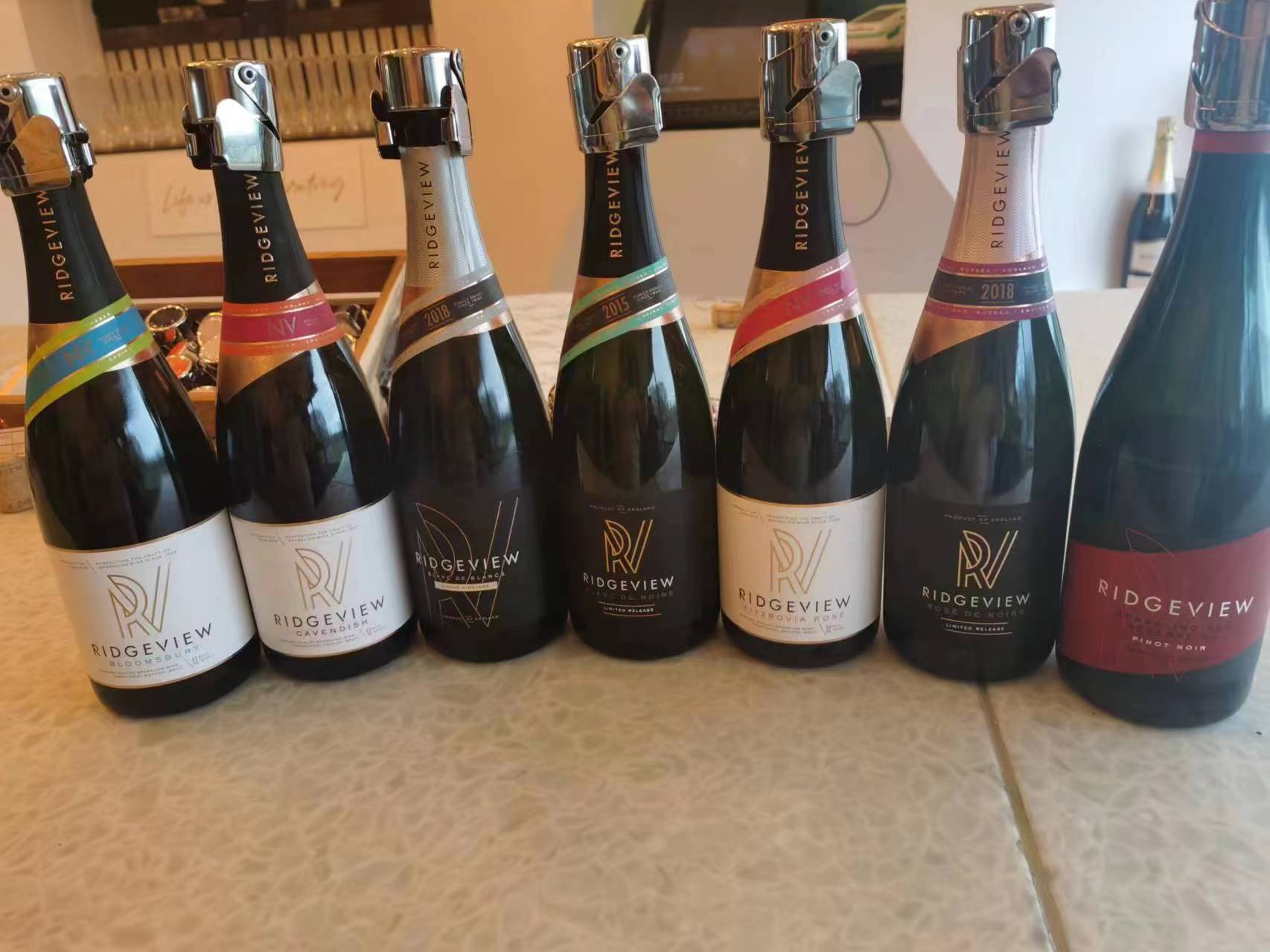
Roebuck Estate.
Two friends who share a passion for wine decide to start a winery: how often have you heard that? Well, in the case of Roebuck it just so happens that the two friends are a talented duo that created a world-class winery in Sussex. The estate was born when the two bought their first piece of land back in 2013, naming the winery after the many wild deer that roam around the property. Today the parcels of land are six, located in niot just Sussex but Kent too.
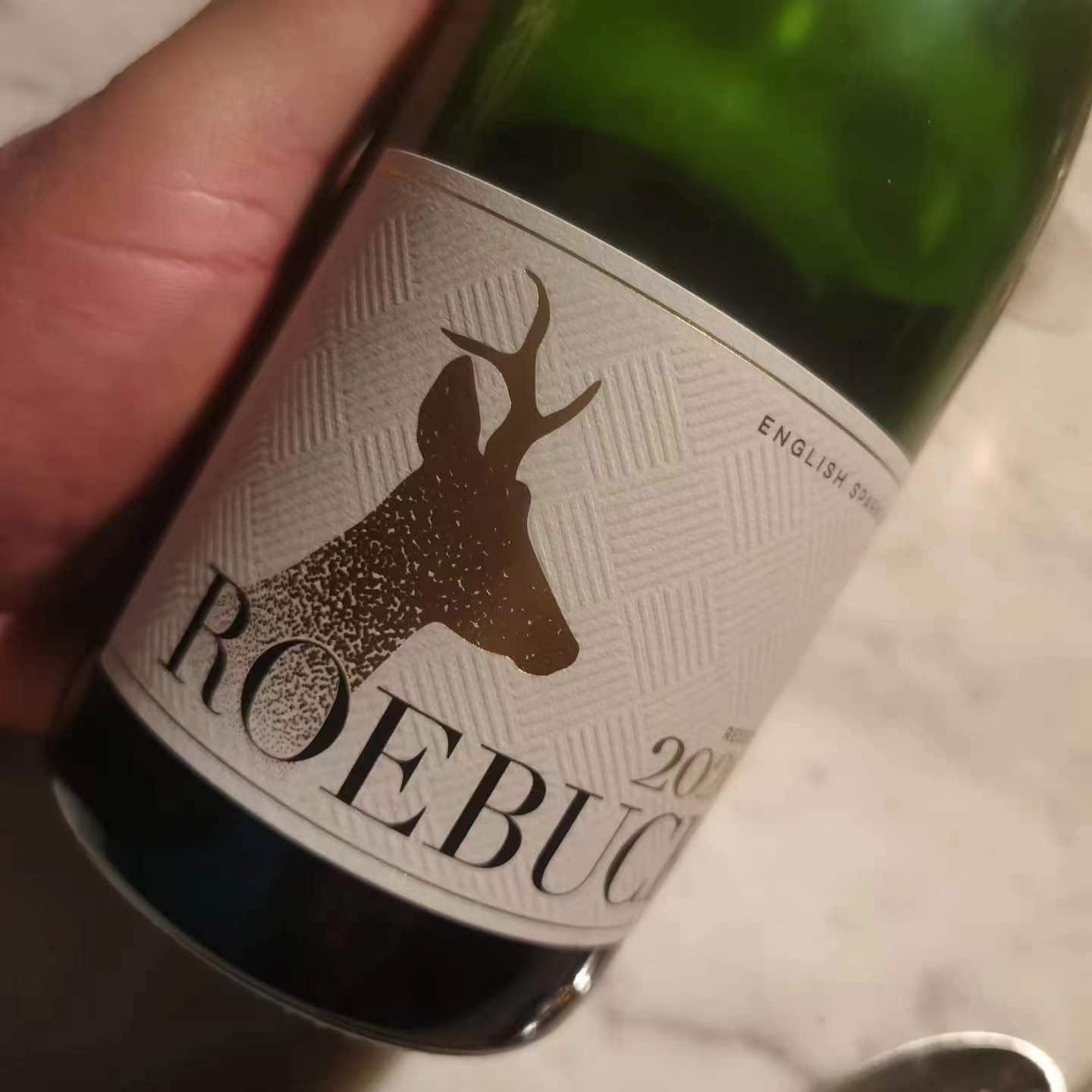
Roebuck Estate 2020 Reserve English Sparkling Wine 92
Bright straw colour with a thin stream of small bubbles. Fresh, energetic apple, honey and lemon balm aromas are deep and complex. Then racy acidity nicely extends similar flavours on the rich tactile but refined finish, providing noteworthy clarity and cut. Another beauty from Roebuck that veers away from their stated path of vintage releases with some age on them: this is zippier and fresher than the estate’s usual fare, but still boasts noteworthy palate weight and complexity. A blend of 56% Chardonnay, 29% Pinot Noir and 15% Pinot Meunier, I like this! Drinking window: 2024-2026.
Roebuck Estate 2017 Rosé de Noirs Brut English Sparkling Wine 93
Bright medium pink. Cranberry, raspberry, almond milk and rose petals on the nose and in the mouth. Bright and juicy, but rich and ripe at the same time featuring very good acid/sugar balance (6.1 g/L and 7 g/L, respectively), this is a very refined pink bubbly that offers plenty of charm now but it will age further. A blend of 79% Pinot Noir, 19% Pinot Meunier and 2% Pinot Précoce culled from the Roebuck, Roman Villa and Little Brockhurst vineyards in West Sussex, characterized by mostly clay-loamy soils. This is a beauty. Drinking window: 2024-2027.
Simpsons.

Simpsons 2018 Blanc de Blancs White Cliffs Classic Method English Sparkling Wine 92
Bright gold. Sweet butter, green apple, and toasty lees complement hints of pear and Meyer lemon on the nose. The buttery note repeats on the palate, which offers sneaky concentration to the energetic orchard fruit flavours. Finishes with building, impressive complexity and good lift, with a nicely persistent mineral nuance. Only the second release of this 100% Chardonnay, this is really quite good. Drinking window: 2024-2027.
Tuffon Hall.
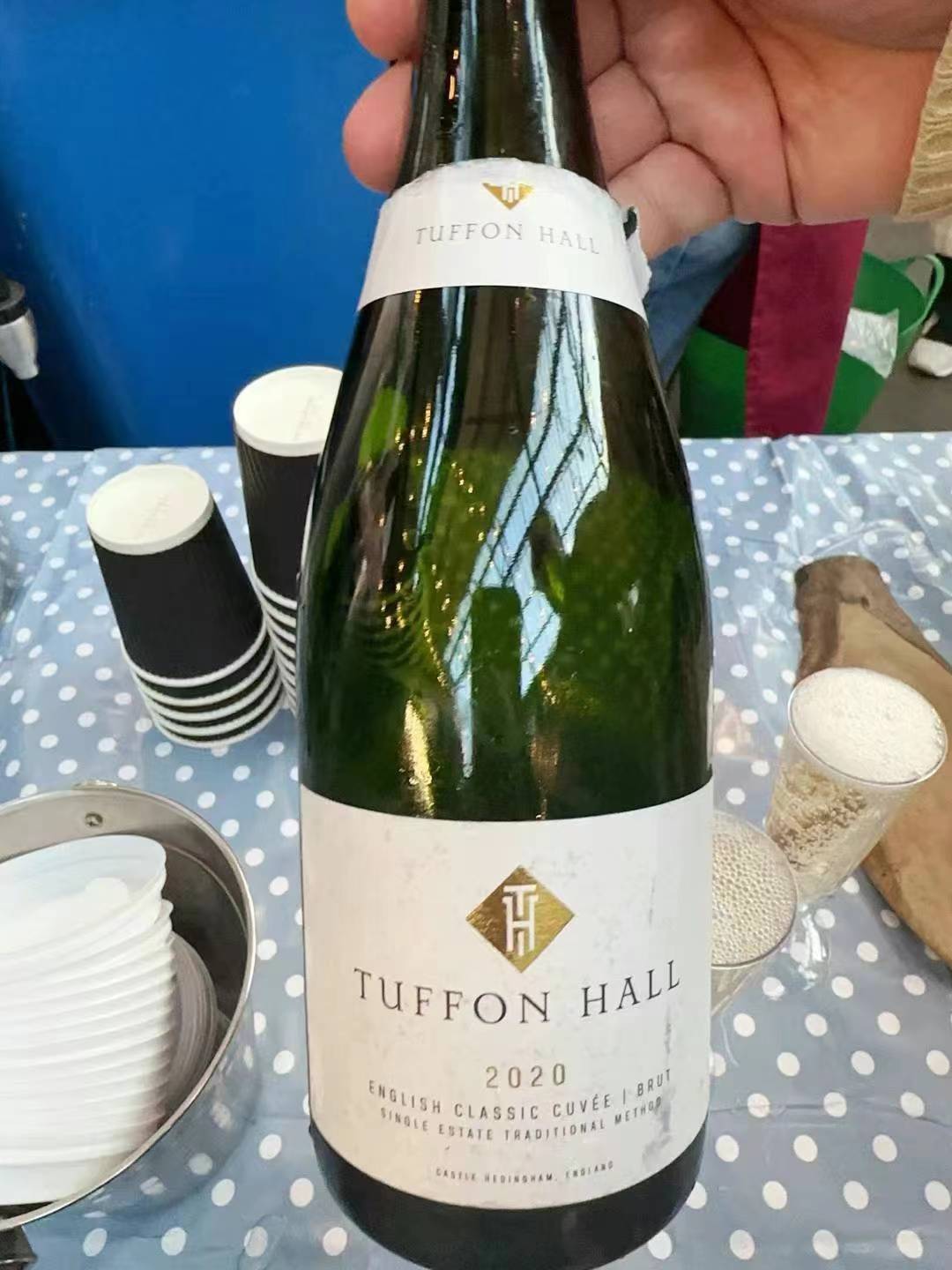
Tuffon Hall 2020 English Classic Cuvée Brut Sparkling Wine 90
Bright pale straw hue. Aromas and flavours of yellow melon, green apple and a touch of honey are bright and energetic, if simple. Finishes medium-long and juicy, with good focus. This is a curious blend in that it’s only Chardonnay and Pinot Meunier, something I have rarely seen. But it works: not the last word in complexity, but this is lovely stuff. A modern, boutique winery in East Anglia, these are bubblies worth looking into. Drinking window: 2024-2026.
Wiston.
Wiston is one of the brightest lights in British sparkling wine today, and that is so much more impressive given it is a relative newcomer to the bubbles scene, even though it appears the ancient Romans were growing vines on what is the property today already a couple of thousand years ago. Wiston was actually founded by the Goring family whose first vines were planted only in 2006 (the gorgeous estate itself has been in the Goring family since 1743). The owners are Harry and Pip Goring, but it’s their son Richard and his ebullient, immensely likeable and passionate wife Kirsty (that will talk your ear out about the winery and its wines) that manage Wiston. Then again, it’s very much a ladies realm at Wiston, given that the winery was essentially started because Pip loved wine and really wanted a vineyard; and Harry, obviously no fool and a very bright husband, decided it was likely a good idea for him to go ahead and do so, for various reasons. Wiston’s wines were initially made by winemaker Dermot Sugrue who was brought in from Nyetimber to create the winery and did so for 16 years, stepping down from his post in late 2022. His understudy of sorts, Marcus Rayner who worked with Sugrue for four years, is now carrying the torch in his stead and making slightly more accessible, approachable wines when young. Wiston offers a bevy of outstanding wines such that it’s truly hard to pick a favourite in the range.

Wiston NV Brut English Sparkling Wine 91
Pale bright straw. Apple, pear and fresh citrus with white flowers on the interesting, fairly complex nose. Then more floral notes on entry, followed by ripe orchard fruit rising long and clean on the long close. Very pretty blend of one third Chardonnay, Pinot Noir, and Pinot Meunier with 8 g/L r.s., but you can’t tell. As far as “introductions” go to wine ranges, this is a doozy. Well done. Drinking window: 2024-2026.
Wiston NV Rosé English Sparkling Wine 88
Pale pink. Very pretty raspberry, licorice and herbs with hints of lemon zest on the lively, energetic nose. Then tougher and tactile in the mouth with similar flavours but with very good length. Maybe try this in a year’s time to see if it softens a bit. Stainless steel only. About 75% Pinot Meunier and Pinot Noir and 25% Chardonnay (though I have also seen 70/30 quoted). Drinking window: 2025-2028.
Wiston NV Blanc de Blancs English Sparkling Wine 93
Pale bright golden straw colour. Scented, mineral-laced aromas of green apple, lemon zest, honeysuckle and glazed kumquats, with flinty minerals gaining strength in the glass. Very refined, yet deep and powerful, offering lively citrus and orchard fruit flavours and exotic floral and tarragon qualities. Clean and fresh in the mouth, brimming with fruity sweetness, the aftertaste is long, very pure juicy and fruity. Lot’s going on here: I’m impressed. The 9 g/L r.s dosage elaves you with a nicely rounded texture. Memory might fail me now, but this may well be the only British NV Blanc de Blancs I know of. Oysters and goat cheese aren’t safe with this bottle in the proximity. Drinking window: 2024-2027.
Wiston 2016 Estate Cuvée English Sparkling Wine 91
Medium gold. Ripe pear, toasted almonds and apple skin aromas are complemented by acacia honey. Then gently sweet orchard and stone fruit flavours convey a bright, full-bodied quality with very good spice and honey notes. The finish is long and crisp. I was told this is a blend of 57% Pinot Noir, 33% Chardonnay, and 10% Pinot Meunier (the website reports 55-33-12, so go figure) that stayed six years on the lees. The 2016 vintage was not an easy one, so it’s no surprise this bubbly was released after the 2017, that was readier to drink sooner. Drinking window: 2024-2029.
Wiston 2018 Blanc de Blancs English Sparkling Wine 94
Very pale straw. Cooked apple and vanilla complement white flowers (jasmine, buttercups) and custard cream. Lovely texture of suave lemon sherbert and sweet spices finishing long and clean. Entirely barrel-fermented (unlike the NV Blanc de Blancs that is fermented half in stainless steel). The bonkersly-good, exceptional 2018 vintage in terms of both quantity and quality (for example, until 2014 they had averaged 25 tons over 6.5 hectares; then in 2014 they took 40, and in 2018 they took 79) is in full display here. Drop-dead gorgeous stuff. Drinking window: 2024-2030.
Wiston 2018 Estate Rosé English Sparkling Wine 90
Pretty pink-red. Expressive strawberry and rose on the nose. Then similar flavours that are deep and long. Then a bit of residual sweetness leaves an impression of gentle mellowness behind. A blend of 80% Pinot Noir and 20% Pinot Meunier that’s just lovely. Drinking window: 2024-2026.
Wiston 2014 Blanc de Noir English Sparkling Wine 93
Dull golden pink colour. Kumquat, poached pear, tangerine, and brioche on the evolved nose. Richer broader and more tactile than any other wine in the range, with flavours of marzipan and tarte tatin and a very strong umami note that may not be for everyone. Closes long and pure. Nice library release wine. A blend of 65% Pinot Noir and 35% Pinot Meunier. Drinking window: 2024-2027.
Wiston 2010 Blanc de Blancs English Sparkling Wine 93
Bright golden-tinged yellow. Yeast and brioche duke it out for attention on the nose with aromas of apple and tangerine; this is evolved but gracefully elegant. Clean, energetic and focused in the mouth, with fresh tangerine, mineral and candied jasmine flavours. Only half went through malolactic; fifty percent was barrel-fermented and the other fifty saw stainless steel. This sophisticated beauty spent a whopping nine years on the lees. Drinking window: 2024-2028.

 中文
中文

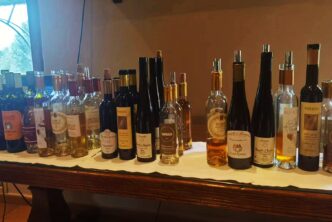
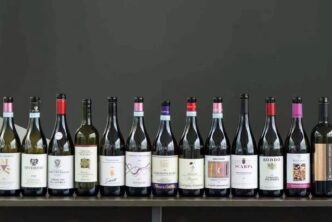
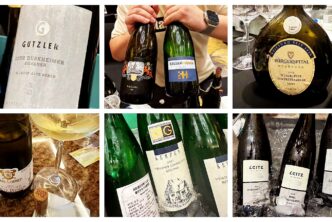
Thanks for this post, I am a big big fan of this site would like to go on updated.
Great, glad you like it, we’ll keep trying to do our best!